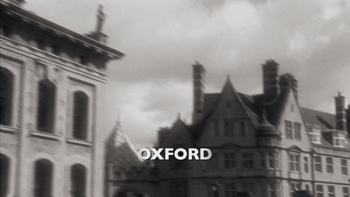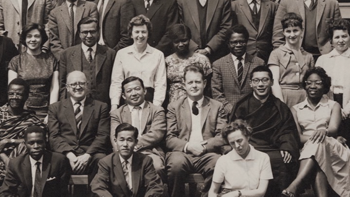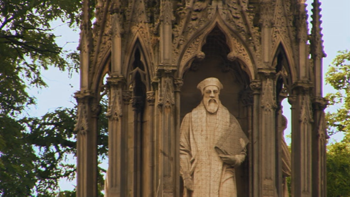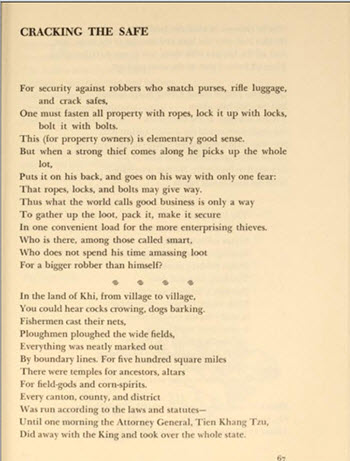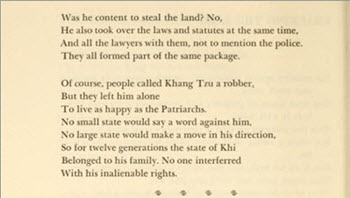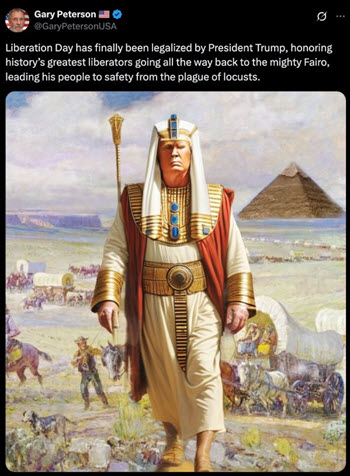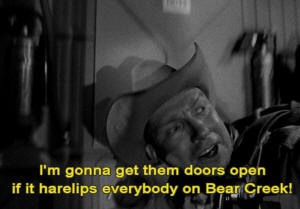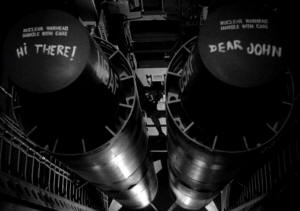Twilight of the Tulkusby Charles Carreon
March 16, 2020
THE CURRENT SITUATIONA THIRD OF AMERICANS BELIEVE IN REINCARNATION, IN LARGE PART BECAUSE THE DALAI LAMA HAS SERVED AS EVIDENCE OF THE DOCTRINE’S VALIDITY; HOWEVER, THE DALAI LAMA HAS JUST DECLARED THAT HE WILL NOT REINCARNATE, BECAUSE THE TRADITION OF SELECTING A NEW DALAI LAMA AFTER THE DEATH OF THE PREVIOUS ONE IS A FEUDAL ANACHRONISM. WHERE DOES THIS LEAVE US?HISTORY OF THE TULKU SYSTEMTHIS ARTICLE PRESENTS THE HISTORICAL ORIGINS OF THE “TULKU SYSTEM” IN TIBET, THE WAY THAT TULKUS ARE RECOGNIZED TODAY IN THE WEST, AND THE EFFECTS OF THE SYSTEM ON TULKUS, THEIR STUDENTS, AND THE PROCESS OF TRANSMITTING BUDDHISM TO THE WEST.SEVEN QUESTIONS TO ILLUMINATE HIS HOLINESS' MOTIVATIONWE THEN PRESENT SEVEN QUESTIONS FOR THE DALAI LAMA ABOUT THE TULKU SYSTEM, AND VENTURE SOME ANSWERS WHICH, WE HAZARD TO SAY, WILL ILLUMINE HIS HOLINESS’ MOTIVATIONS IN TERMINATING THE TRADITION OF REINCARNATING A DALAI LAMA.His Holiness did not explain his motives further, and the incurious press has neither inquired of his office nor engaged in conjecture. But let us think it through. This is a super-heavy thing to say, assuming it will get around to the Tibetan people, both those living in Tibet and in émigré communities around the world. To say his announcement will be a disappointment is a serious understatement. The central tenet of the faith has been removed. The Tibetan Atlas has submitted his resignation. The throne of Tibet will soon be vacant, because its next God King has prospectively abdicated. The skies of Tibetan Buddhist cosmology are shaking on their medieval foundations. If the Fouteenth Dalai Lama really believed himself to be the “tulku” of Chenrezig, the Father of Tibet, who has altruistically, intentionally reincarnated fourteen times to lead the Tibetans, he wouldn’t abdicate.
THE LORD OF COMPASSION AND HIS WRATHFUL COUNTERPARTChenrezig is a timeless figure. He’s not going to let some political changes on twenty-first century planet earth impede the fulfillment of his commitment to bring benefit to all living beings in general and Tibetans in particular. That would be backing down in the face of a worldly challenge, as Chenrezig would never do. Indeed, when the going gets tough, Chenrezig gets tougher, and becomes Hayagriva, whose wrath has been legendary for a thousand years, ever since he dealt with a traitor to the Buddha’s Sacred Doctrine by turning into a horse, riding straight up his anus, and out his mouth. While painful, Hayagriva’s wrathful therapy abruptly and totally rehabilitated the heretic, who attained Tibetan Buddhist liberation as the result of the apparently fatal rape.
This type of brutal spiritual parable often recurs in Tibetan Buddhism, because Tibetans were an extremely rough people. Although today, Tibetans are marketed as the spiritual athletes of the planet, this is a western fantasy.
They have been better known throughout history by their neighbors as untameable brigands mostly likely to kill you on sight,
who worship demons whose external forms appear as mountaintops, and to whom they offer simulated and non-simulated blood sacrifice. The Tibetan feudal system suffered from a shortage of arable land, so younger sons did not inherit, and rich and poor alike, one in four boys, were packed off to the monasteries, where the social divisions in the society at large were replicated.
The abbots of major monasteries would all be tulkus, who enjoyed a plush lifestyle, eating much better, living in warmer, cleaner accommodations, enjoying an abundance of leisure.
TIBET -- A MUCH ROUGHER TURF THAN YOU HAVE BEEN LEAD TO EXPECTYes, the Dalai Lamas have been known to play rough -–
the Fifth Dalai Lama made common cause with the Mongol conquerors to acquire monasteries and monks at the point of the sword. The Dalai Lamas have been treated roughly as well -–
the Ninth, Tenth, Eleventh and Twelfth Dalai Lamas all died before reaching the age of majority. Their convenient deaths allowed Regents to rule uninterruptedly for nearly a hundred years, and malignant cliques within the Potala are presumed to have poisoned the young prelates. The situation of some tulkus today is little better.
First, it is not beneficial to remove young children from their parents at an early age to be raised among male clergy.
Second, hard evidence of sexual abuse in Tibetan Buddhist monasteries has come from many sources, eg.,
in 2013, Bhutanese health authorities were forced to distribute condoms at all Buddhist monastic schools to “stem the spread of sexually transmitted diseases and HIV among young monks who are supposed to be celibate.”
THE NO-WAVE TULKUSToday, because the young tulkus have ceremonial value, and can be toured as spiritual entertainment in China, Europe, and the US, collecting substantial donations for the clerical impresarios who mount these international tours, many tulkus are raised in an excess of indulgence and wealth, as the irascible tulku Dzongsar carped in a typically rambling screed a few years back. Most American-born tulkus would fall into the class of the needlessly pampered. They are never discovered, like occasionally happened to the old Tibetan tulkus, to have been born into a farming family from the hustings; rather, they are uniformly the male offspring of lamas or of women who have carried on with lamas, in and out of wedlock. These innocent souls are discovered as tulkus in their toddler years, when brother lamas recognize each other’s offspring as divine in exchange for love donations and future reciprocal recognitions.
Unfortunately, these bizarre titles of Tibetan clerical royalty are of limited value in the modern world, and really of no value at all to those unwilling to mime the appearance of sanctity and conduct meditation retreats. While the recipients of these bizarre titles may enjoy marinating in the rote adulation bestowed by abject believers, they rarely “train in meditation,” and many clearly suffer from impostor syndrome. They simultaneously benefit from their titles and connections -– getting jobs with UNESCO and other NGOs like some of the multiple Trungpa tulkus -– and wish to come across as “ordinary people” who are “not full of themselves.” In other words, they have been backed into a lie that they had no part in creating and have no idea how to carry off.
Some of these young people try to throw it off, declaring they’re done with the sanctimonious pose, but then, they end up back in the mind-healing business, like a Spanish boy who was “recognized” as a tulku, trained in India at a monastery, rejected the indoctrination and proclaimed his training a form of captivity in a degenerate environment, and left his robes behind, only to succumb to the allure of guruhood again, which he seems to be pursuing against his own better judgment.
Some cases end up like Dzongsar, a bitter, bile-spitting little man who exhibits a fascination with spiritual totalitarianism and a raunchy sexuality that many would say ill befits a cleric.
Others end up like the child that Chogyam Trungpa sired upon the body of a Tibetan nun, then abandoned in childhood -– Osel Rangdrol Mukpo, aka the Sakyong Mipham. No one would envy young Osel’s upbringing -– life in India must have been tough with his mother, who received no support from his father Chogyam, and worked on a road crew after Osel was born; however, it was probably better than
the two years he spent in an orphanage in England while his father was litigating over his custody with a family of English Buddhists who believed
Trungpa and his sixteen-year old bride were a bit too punk rock to be raising children. When Trungpa finally got custody of Osel and brought him to his Boulder, Colorado enclave, he was whisked into a weird world where his father was a god to legions of dazzled Americans, and spent most of his life in a booze & coke haze, delivering himself of unusual Buddhist lectures that wordsmith students pounded into core Buddhist bestsellers, the backbone of
the Shambhala Publishing empire.
Osel was not trained extensively in meditation, and it is rumored by those present during his internment at the Karmapa’s monastery that he was an impulsive sort, more given to blasting about on his motorcycle than engaging the “three wisdoms” of “hearing, contemplation, and meditation” that ripen a lama’s spiritual wisdom. Osel was not at all prepared to lead a spiritual movement. Nevertheless, when
Trungpa’s chosen Regent, Thomas Rich, fell into disgrace and killed two students with a sexually-administered dose of AIDS, the original Trungpa succession plan was scrapped, and Osel found himself in the role of Top Banana.
Ultimately, Osel’s legacy was consumed by the absurd excesses his father engineered into the social structure of his “Kalapa Kingdom.” The “Kalapa Court” was a locus of licentiousness during Trungpa’s life,
a playground of sex, drugs and alcohol that ensnared seven women that Trungpa married. Trungpa had been married to Diana for a few years when he started marrying seven other women, and she played turnabout deftly, cohabiting with Mitchell Levy and bearing his child, Ashoka. The extra seven women, called “Sang Yum,” received marriage licenses from the Kalapa Kingdom, and comprised the core of Trungpa’s inner social circle.
One young woman, inducted into an intimate relationship at an early age and married to Trungpa at 18, later committed suicide. Among those who remain, some are venerated as near-saints, and appear in gushing profiles as ideals of the spiritual woman on the Shambhala.org website. Most of the surviving Sang Yum have kept their silence about the iniquities they observed and engaged in while serving as one-eighth of Trungpa’s sex life.
One of the Sang Yum has broken silence, however, revealing Trungpa to be a cocaine addict, explaining, metabolically, how he could drink alcohol to extreme excess and remain mobile, if not ambulatory.
This toxic lifestyle put an end to Trungpa’s earthly adventures at the age of 46 in 1987, but the shenanigans continued in the Kalapa Kingdom.
Trungpa’s love of intoxicants and an abundance of sexual encounters had spread throughout the group.
Two teachers are currently incarcerated awaiting trial on charges of child molestation. Numerous others have been credibly accused of using their teacher status to extract sexual favors and obeisance from women and men. And Osel himself, the Sakyong, the monarch of his father’s spiritual kingdom, was outed in 2018 as the beneficiary of an entire system that,
Weinstein-like, captured and sacrificed female followers to his drunken lust.
Shambhala exhorts its followers to believe that their religion will someday take over the entire world and save it from a Moslem horde, which might seem a bizarre notion for modern American students to hold, but once you know that Trungpa was a rake and yet the founding saint of the religion, nothing is too crazy to believe. So just as sure as dogs come back and lick up their vomit, the Shambhala organization is moving with all deliberate speed to place Osel back on his throne, which, by the way, is ten feet high.
Asked about his father in
a hagiographic video advertising Chogyam Trungpa’s “Crazy Wisdom” persona, Osel’s half-brother Gesar obliquely reveals that his father was a distant figure who gave him kingly respect, not fatherly affection: “My father respected me, and would listen to what I had to say. He treated me like a reincarnated lama -– like the king of another country.” Gesar has chosen not to act out the role of tulku, but wants to be a good Buddhist. Gesar’s half-brother Ashoka is the product of the loose sexual mores prevalent in Trungpa’s group, born to the extramarital union of Gesar’s mother Diana and Trungpa’s disciple Mitchell Levy. Ashoka has not donned Buddhist robes, currently is a staff reporter for the ACLU, and has enjoyed a series of plum jobs as a journalist, if his own webpage is accurate.
The son of Namkhai Norbu Rinpoche was offered a job that might have seemed attractive to many -– to take over the guidance of the spiritual flock amassed by his father, numbering into the thousands. But he was born in Italy to an Italian mother, his name is Yeshi Silvano Namkhai, and he got himself a western education and a job with IBM. In the movie, “My Reincarnation,” Silvano is depicted as a highly conflicted person. Silvano’s father is another distant type. The old lama grew up in a monastery from childhood, and although he was groomed to play father figure to thousands, and obviously does that job well, he didn’t bounce his kids on his knee while singing silly songs, or read them stories before bedtime. There’s this huge gap between father and son, and then the son is told that he’s a tulku. Silvano even goes off to Tibet and meets people who think he’s a reincarnation of their former guru. These people make it clear that they sacrificed much to care for his former incarnation. But now, what can he do for them? He doesn’t speak the language, he doesn’t know the rituals, he’s a hollow shell. In “My Reincarnation,” the narrative arc leads us to think that he’s actually beginning to warm to the role of spiritual leader, and since his father’s death, he has taken on the leadership role in the community; however, there are reasons to believe that his engagement is strictly limited by his own awareness of the limits to his personal commitment to the role.
For example, this April, Silvano was planning on giving a “transmission” of his father’s teachings, but only to those who have never received the transmission before (excluding all old students), and only in Italian (no translation provided). This is a strangely provisional approach to propagating a religion that I would venture to say springs more from Silvano’s respect for his father than from any inner impulse to teach Buddhism. Finding himself put upon by hundreds of people who say, “Don’t let your father’s lineage die,” he has given in, and is going to deliver a “transmission.” But such a transmission is more in the nature of a placebo than anything else. His father’s students are looking to Silvano to give them access to their own “true nature,” as his father taught. How can it be that they seriously believe they will receive it? Because they have psychologically transferred their power to the guru, and now need to get it back, even from a person who knows darn well he doesn’t have it.
Ironically, the Twelfth Trungpa tulku, whose eleventh incarnation as Chogyam Trungpa is lauded as the pre-eminent transmitter of the Kagyu lineage to the west, has been supplanted by his mere physical progeny, i.e., poor old little Osel.
So now, the Twelfth Trungpa lives isolated in Tibet, neglected by his spiritual relatives. The Twelfth Trungpa has never been taught English, has begged on YouTube to have the teachings of Chogyam Trungpa translated into Tibetan so he can read them, and lives in an isolated monastery in Tibet. Meanwhile his American “relatives” give him the sop of faint praise, a stipend and some building funds, while the Sakyong parties like a rockstar, and a small coterie of insiders live well by exploiting the mass of students accumulated by the original “crazy yogi.” Memories are indeed short in the spiritual world, and the irony of the mistreatment of the Twelfth Trungpa tulku seems to elicit no comment from spiritual writers. While other Tibetan Buddhists rush to re-enthrone their deceased teachers and exalt them in their new life-form, Trungpa’s devotees frankly don’t seem to give a damn where Trungpa’s incarnation ended up. But it doesn’t matter, because Shambhala has simmered down to being what all religions are at bottom -- social clubs that profess a faith, collect donations and bequests, and issue insurance redeemable in the afterlife. American Tibetan Buddhists have been groomed to expect the tulku tradition to continue, but as Shambhala’s disappearance of the Twelfth Trungpa Tulku illustrates, the outlines of that tulku tradition are quite unclear. The fact that Shambhala students tolerate the conceptual sleight of hand that makes Trungpa disposable while all other tulkus are venerable tells you something about
the effect of good mental programming. Get people to accept contradictory ideas early on, and eventually, they don’t even notice them.
Gullible students are a valued commodity, however, and they are not always present to make every modern tulku’s life comfortable.
The tulku of Kalu Rinpoche, who had thousands of students worldwide, was routinely raped by multiple monks and nearly murdered by his tutor, a matter to which the young, victimized Tibetan boy testified on YouTube. It appears that such occurrences have not been unusual in Tibetan Buddhist monasteries, and
the current pampering that tulkus receive in the west is essentially an anomaly. Dzongsar reports that, “As a child I had just two handmade toys that I made myself. Worse, my tutor confined me to one room not just for a few weeks or months but for a whole year, so that even going to the toilet became a long awaited excursion. We also suffered regular verbal and physical abuse that went as far as making us bleed from the head and whipping us with nettles.”
PREDATOR-GURUSTulkus aren’t the only ones abused in this system. Some people pretend to be tulkus, and pay lamas to agree that they are tulkus, in order to wield mind-control powers over gullible students, who will accept any type of abuse from people who are called “Rinpoche,” the honorific that is properly applied only to reincarnated tulkus.
Sogyal formerly-known-as-RInpoche is the scariest case of a self-annointed tulku disporting himself like a wolf among the spiritual sheep. Sogyal Lakar was born to a family of hereditary retainers for
the legendary Nyingmapa tulku, Dudjom Rinpoche, and educated by Jesuits in India. His first efforts at establishing himself in the spiritual fields of America misfired, and
after he was sued for sexual assault in California, he decamped for Britain, where his schtick found a warm reception. Still, nobody recognized him as an altruistically, intentionally reincarnated being until he began generating large numbers –- as in sales of his
“Tibetan Book of Living and Dying,” ghostwritten by Andrew Harvey, a British writer who has published a number of books with spiritual themes, none of which sold anywhere near as well as what he wrote for Sogyal. The dynamic of branding has tremendous power in the spiritual field, where devotees will vacuum up all of the literature offered by a popular teacher, often in a first rush of enthusiasm, sometimes over a lifetime of deepening devotion. Besides publishing a runaway spiritual bestseller, Sogyal had other techniques for gathering disciples.
First, he got folks to call him Rinpoche. It may have seemed a harmless indulgence to the lamas who knew he was lying, which was all of them, given how much money he could spread around. An invitation from Sogyal to teach at a Rigpa center could provide a Tibetan lama with more money in a weekend than he would otherwise make all year.
Sogyal also targeted the vulnerable for sexual and financial predation. He preyed upon the bereaved, using his bona fides as a Tibetan lama to enviegle his way into the confidence of those who had lost their loved ones. Sometimes women weeping for their lost loved ones were subjected to crass advances, or worse. He demanded sex and got it from the willing and the unwilling alike. Sogyal often threatened students with hell in the afterlife, a serious threat when leveled by a Rinpoche, whose actions are presumed to carry weight with the karmic authorities. When his desires for worldly comforts, food, and lavish amenities were not swiftly fulfilled, he struck students, sometimes causing serious injury, and always causing psychological pain.
A lawfirm hired by Rigpa Foundation, the organization Sogyal founded to spread Tibetan Buddhist teachings, advised Rigpa’s leadership to separate the corporation from Sogyal permanently, because it had discovered pervasive evidence not only of Sogyal’s direct misconduct, but of widespread enabling of abuse, denial of its existence, and retaliation against those who complained about the sick situation. A trustee of Rigpa, Patrick Gaffney, was banned from serving on the nonprofit board after
the UK’s Charity Commission investigated, and found Gaffney “
had knowledge of instances [of] sexual and physical abuse against students [and] failed to take appropriate action and is therefore responsible for misconduct … in administration of the charity.” Nor was Gaffney alone. After the entire affair had burst like a pustulent boil on the front pages of the world periodicals,
a considerable group of high-level followers wrote a letter to the Board asking for Sogyal to be reinstated as Rigpa’s head. Sogyal’s madness had corrupted an entire organization.
SEVEN QUESTIONS FOR THE DALAI LAMA THAT MAY ILLUMINATE HIS DECISION NOT TO REINCARNATEAfter this discussion, we might ask ourselves again why the Dalai Lama declared his own reincarnations at an end.
First, he might have reflected on the psychological cost to the young men, like himself, who are recruited for these strange jobs without consent.
Second, he might have considered whether creating tulkus serves any use in the modern world, where they aren’t needed to serve as the abbots for huge monasteries.
Third, he could have reflected on how badly some of the new tulkus are doing, and have seen that when tulkus are created for no purpose, they may suffer from a lack of clear mission or purpose, perhaps for their entire lives.
Fourth, he could have reflected on how the misuse of the tulku doctrine causes injury to everyone when lamas engage in sexual, physical and financial abuse of their students.
Fifth, he could have reflected on how, since tulkus have no real purpose, the doctrine will tend to be used by pious frauds who adopt the name of tulku for selfish purposes, which will bring Tibetan Buddhism into discredit, and render it an inappropriate vehicle for sharing his message of compassion and humanism.
Sixth, he could have considered how the Chinese and his other political opponents will make the next Dalai Lama’s selection a circus, and that he will not be around to make it turn out right.
Seventh, he might have realized that the tradition of “recognizing” tulkus such as the Dalaia Lama, is inherently a vehicle subject to manipulation by deception, and should be put to rest before he dies.
Considering the first question, the Dalai Lama would certainly probably agree that kidnapping young boys early in life and grooming them to be abbots might have been somewhat functional in Tibet’s feudal theocracy, but there’s no need for that sacrifice anymore. The Chinese have utterly altered the society, and the centers of culture are no longer isolated monasteries lodged in craggy mountain ranges, requiring the stabilizing belief in an enduring local ruler who reincarnates to maintain the ritual practices that assure good fortune on earth. Estimates made by China in the 1950s placed 24% of Tibet’s male population in monasteries, approximately 120,000 monks in 2,700 monasteries. (
M.C. Goldstein, Tibetan Buddhism and Mass Monasticism) The Chinese have reduced the monastic population to 46,000, still a substantial number, but due to Han immigration from China, there are now 3.18 Million people in Tibet, so their influence on society is no longer vital. In truth and in fact, continued fidelity to the image of the Dalai Lama as Lord Chenrezig, the God King of Tibet, while a source of comfort to many of the faithful no doubt, seems unlikely to bring substantial benefit to the Land of Snows.
Second, the Dalai Lama could see that making tulkus is not in any way necessary to the propagation of the Buddhist Dharma, as he has formulated it, which is a form of non-sectarian humanism with an emphasis on compassion and optimism, and a meditation practice founded in “mindfulness,” a practice style that is more common to Thailand and Burma than Tibet. The colorful gods and demons who ruled Tibet with splendor and terror are not making the jump from their land of origin to the west, and for good reason. The Tibetan sorcerers would contend with bad weather by casting spells, legendarily standing on a mountaintop going toe to toe with demons, being battered with hail and snow to fight them with the magic of the Lotus-Born Guru.
Ah, those were the days, and they’re gone forever. Even the staunchest Tibetan Buddhist doesn’t think we’re going to exorcise our way out of global warming. Just as we have no place for sorcerers, so we have no need for tulkus. If gurus want to pass their students on to their children, there’s nothing to stop them –- they don’t need to pretend their children are divine. Zen teachers have passed temple abbot positions down through a hereditary system for centuries.
The famed Shunryu Suzuki Roshi’s father was a Zen master, and he ultimately took over the family temple after serving elsewhere, and before traveling to establish Zen Center San Francisco, and the Tassajara and Green Gulch monasteries.
Third, considering whether it is good for the tulkus to be created to live in a world that doesn’t need them, he has probably seen enough of the results. There was a time, from the 1970s into the first decade of this century, when there was a lot of enthusiasm for traditional Tibetan Buddhism. Americans and Europeans were excited by the idea that tulkus might be born into American and European Buddhist families, and indeed, they have been recognized. But the crop has pretty much rotted in the basket. As we’ve discussed above, these young men are lost, having been inducted into a system that no longer exists except for sentimental purposes. If they take themselves seriously, they risk becoming corrupted by an idea in which they have no basis for real belief. None of these boys “remembers their past life.” Consider the strangeness of the Twelfth Trungpa’s plea to be able to read the works of the Eleventh Trungpa in Tibetan. For heaven’s sake, the whole purpose of being an intentionally reborn being was to remember the wisdom from your past lives! If you need to read books to learn this stuff, where’s the inherent wisdom? So being called a tulku is actually just a ticket to becoming disconnected from reality.
Not only Tibetans can be afflicted with the tulku delusion. Plenty of westerners are afflicted by the belief that they attained wisdom in past lives and are here to dispense it. For example, a couple of years ago, I ran into a man in his fifties whom I have known for thirty years. A fringe player in the Oregon Buddhist community, he was the big fellow with the deficit of smarts who tagged along, drove cars, hauled loads, smiled, bowed, and basked in every ounce of love that ever came his way from the lamas. Unfortunately, one of them heedlessly told him that he was actually a tulku. Ever since then, this poor man has felt cheated out of the assistance that he has been lead to believe tulkus should receive. He desires fervently to be recognized by others as a saintly man, so much so that he’s become lonely, isolated, resentful, and frankly lost. Stories like these are far from uncommon, because many lamas will use this sort of flattery to extract favors from the gullible, who allow themselves to be paid for labor and devotion in false praise. Like a fetish that gives pleasure merely from being handled and gazed upon, the delusion that one possesses inherent spiritual eminence feeds a
spiritual narcissism that is no less toxic than the worldly variety.
Fourth, there have been enough stories of recognized and unrecognized tulkus abusing their students, and the Dalai Lama has not been pleased by any of them. He hasn’t said much about them, either, but that is probably because the massive pedophile scandal swallowing the Catholic Church dominates the airwaves, and a compliant press never asks the Dalai Lama anything embarrassing. But he has to see that the conduct of Sogyal, Trungpa and Osel Mukpo has injured their students and besmirched the Buddhist doctrine. So he may not say much about it, but he certainly has it in mind.
Fifth, the continued existence of the tulku tradition corrupts lamas into selling recognitions, and results in the devaluation of the entire concept of Tibetan Buddhism, when gauche American clowns ape the ecclesiastical elite. The absurd “recognition” of
Steven Seagal, now recognized as one of Hollywood’s merry band of celebrity rapists, is a classic example. Seagal has always been a self-impressed blowhard whose primary gift is his enormous body, his ability to use it to kill people, and his willingness to display that skill in dreadful movies where the body count is the measure of Seagal’s star achievement. The same lama who recognized Seagal also recognized a woman whose given name was Alice Zeoli, who renamed herself Catherine Burroughs and became a Washington DC psychic catering to the spiritual element in the nation’s capitol, then snagged a tulkuship and become Akon Jetsun Norbu Lhamo, aka Jetsunma, aka “
The Buddha from Brooklyn,” as Martha Sherrill’s book on the woman is entitled. Zeoli fled Maryland after being charged with beating one of the nuns in her compound, and has found an appropriate perch in the land where anything might be true –- Sedona, Arizona.
Sixth, the Chinese are wily adversaries who have been playing politics with Tibet for a couple of millennia. They have conquered the land, they are subjugating the people and flooding the region with the Han ethnic Chinese settlers, and they regulated Buddhism in Tibet as they do in China. Temples require licenses to operate, their doctrines are subject to censorship, and the monastic population has been greatly reduced, initially by outright murder and imprisonment, and today by the imposition of coercive forces usually less extreme. The Chinese have always exercised as much control as possible over Tibetan reincarnations. The Panchen Lama’s latest rebirth was dictated by the Chinese.
There are two Karmapa tulkus, because the Chinese chose one, and a Tibetan faction chose another, and both have continued to represent themselves as the Seventeenth Karmapa. Tai Situ, a high Kagyu lama, has made himself very comfortable as a creator of fake tulkus for power and profit, and he has
close Chinese connections. Thus, the manipulation of the next Dalai Lama’s birth by the Chinese is a foregone conclusion.
Seventh, death makes fools of us all when we try to exercise control from the grave. It just doesn’t work. We control the earth while we live, and then death takes our power and hands in to the next generation. Chogyam Trungpa thought he could control the future. He made his intentions crystal clear, and it wasn’t to spend his next incarnation as the Twelfth Trungpa in a remote monastery in Tibet, uneducated in the English language, and ignored by the students of his Eleventh incarnation. He trusted his boyfriend Thomas Rich, a lascivious bisexual with whom Trungpa may have had intimacies, to serve as his Regent, and trusted his lawyer, Alexander Halpern, to fulfill his intentions. But Halpern is a practical man, who provides legal advice to the Dalai Lama and many other Tibetan lamas, and Halpern unloaded the bad press associated with Trungpa’s name deftly and permanently, cutting the Twelfth Trungpa out of the action by changing the Articles of Incorporation, structuring authority around Osel Mukpo, and changing the name of the corporation from Vajradhatu to Shambhala.
Everything is now precisely as the Eleventh Trungpa did not want it to be. He is on the outside, his blood kin on the inside. The Dalai Lama can see these dynamics could afflict his own succession. The Fifteenth Dalai Lama could be chosen by China, and put to work undoing the current Fourteenth Dalai Lama’s life work. Questions arise, as well. Presumably, the Fifteenth Dalai Lama would be the ruler of the Tibetan Government in Exile, and from that position, he could declare the existence of Tibet null and void. The world would not shift in its course, if he did.
Tibet is in fact, already a historic relic. As the source of virtually all of the rivers that pour through China and India, it was inevitable that the Chinese would take over what they saw as an unoccupied square on the chessboard of the Great Game. The fantasies of Tibetan Buddhism were like rarefied species that live only on high mountains. As the Tibetans rightly feared when they left, their culture has not proven particularly useful to them or to the other inhabitants of the world beyond the mountains that ring the Land of Snows. Because this is the way of impermanence. Things arise based upon the confluence of conditions, and they disappear along with those conditions. The conditions that gave rise to the tulku tradition are gone, and with them all need for the tradition. The Dalai Lama has recognized this. Whether American Buddhists will is an open question.

